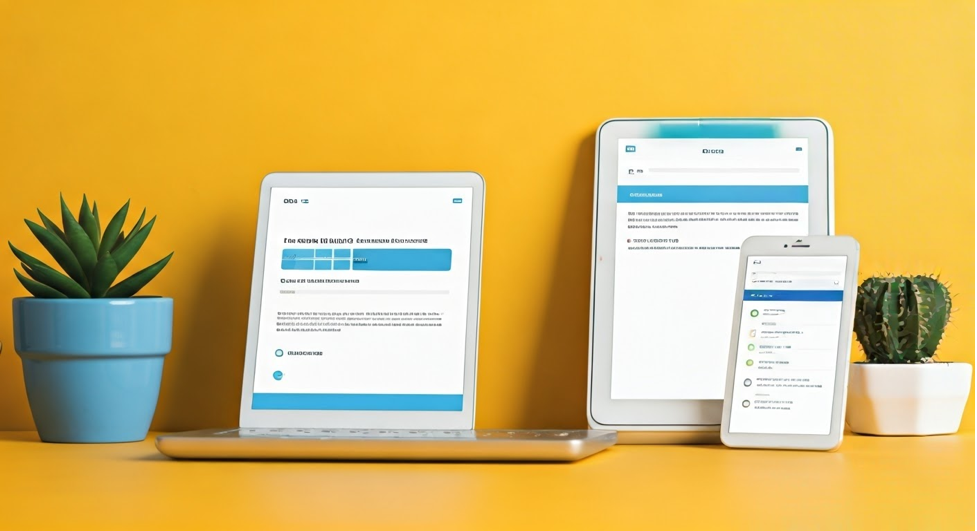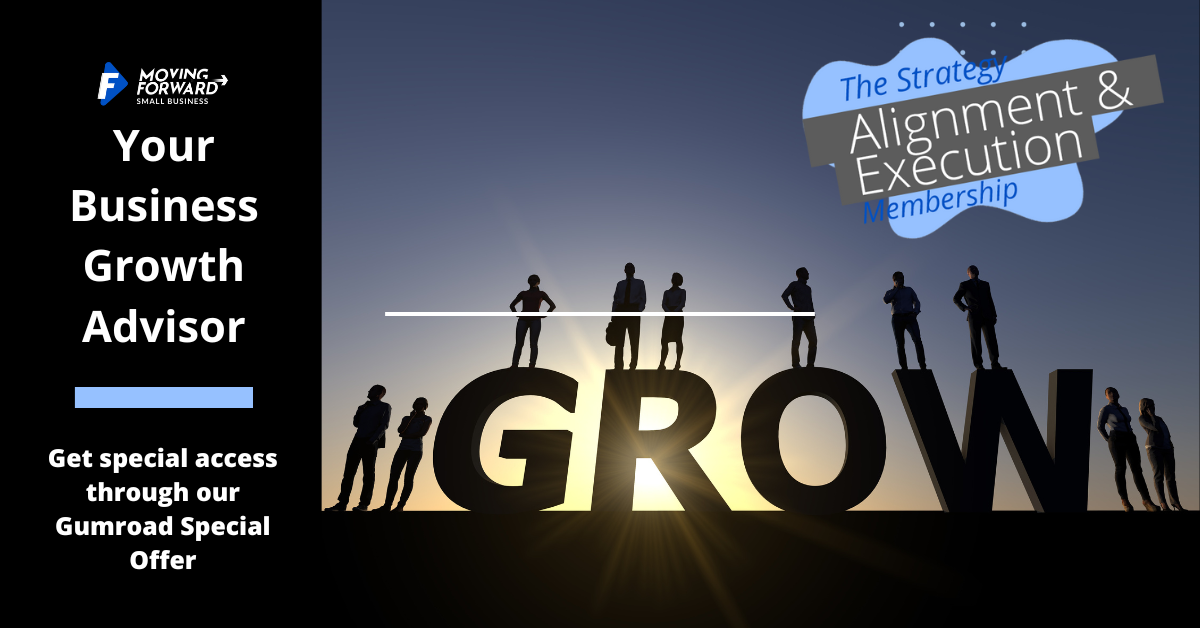Key Highlights
- Inbound marketing brings in your target audience by offering valuable content they want. This builds trust and engages them.
- It is different from outbound marketing, which directly reaches out to people. Inbound marketing naturally attracts potential customers with relevant content.
- This approach includes different digital marketing channels like content marketing, SEO, social media, and email marketing.
- Small businesses can really gain from inbound marketing. It helps them build brand awareness, generate leads, and create long-term relationships with customers.
- It is also important to measure how well your inbound marketing is working. Look at key metrics like website traffic, lead generation, and customer engagement to improve your strategy.
Introduction
In today’s digital world, small businesses have a tough time getting noticed. They face strong competition for the attention of their target audience and new customers. This is where inbound marketing comes in as a big help. Unlike outbound marketing, which puts unwanted ads in front of people, inbound marketing pulls in potential customers in a more natural way. It does this by creating and sharing valuable content. This content is shared through different digital marketing channels. It offers solutions and builds your brand as a trusted resource.
Understanding Inbound Marketing
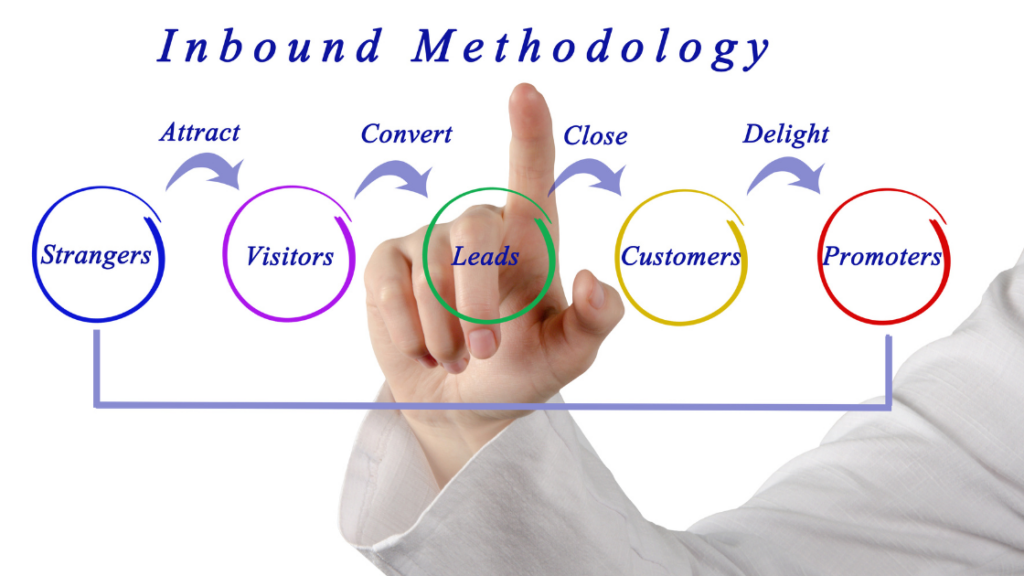
Inbound marketing is a strong marketing strategy. It focuses on drawing in your target audience by giving them valuable content tailored to the needs of your audience. This type of marketing is different from traditional outbound marketing, which often interrupts people.
The main idea of inbound marketing is to make your brand a useful resource for potential customers. By making helpful and interesting content, you can attract the right audience. This builds trust and helps turn them into loyal customers.
Defining Inbound Marketing for Small Businesses
For small businesses, inbound marketing means building a strong online presence. It helps you reach the right people with relevant content. Instead of chasing leads, you focus on giving value and building customer relationships with potential customers. They are looking for information about your industry.
Let’s say you own a bakery. Rather than only putting up flyers for your pastries, you could start a blog. You can share tasty recipes baking tips, and show off your beautiful custom cakes.
This focused approach attracts people who care about your products. It also shows that you know your stuff. As customers engage with your content, they learn to trust your brand, which is a great way to ensure that this trust increases the chance that they will choose your bakery when they are ready to buy.
The Evolution of Inbound Marketing in the Digital Age
Inbound marketing has changed a lot because of digital marketing. In the past, businesses used print ads, cold calling, and other old-fashioned ways to connect with people. Now that the internet is a big part of our lives, inbound marketing has easily adjusted to the online world.
Content marketing is now a key part of inbound marketing. It helps businesses send useful information to their audiences through fun blog posts, helpful articles, exciting videos, and engaging social media campaigns.
This move to digital channels helps businesses target their audience better. It also gives them a wider reach and results they can measure. Because of this, inbound marketing has become a stronger strategy for all kinds of businesses.
Comparing Inbound and Outbound Marketing
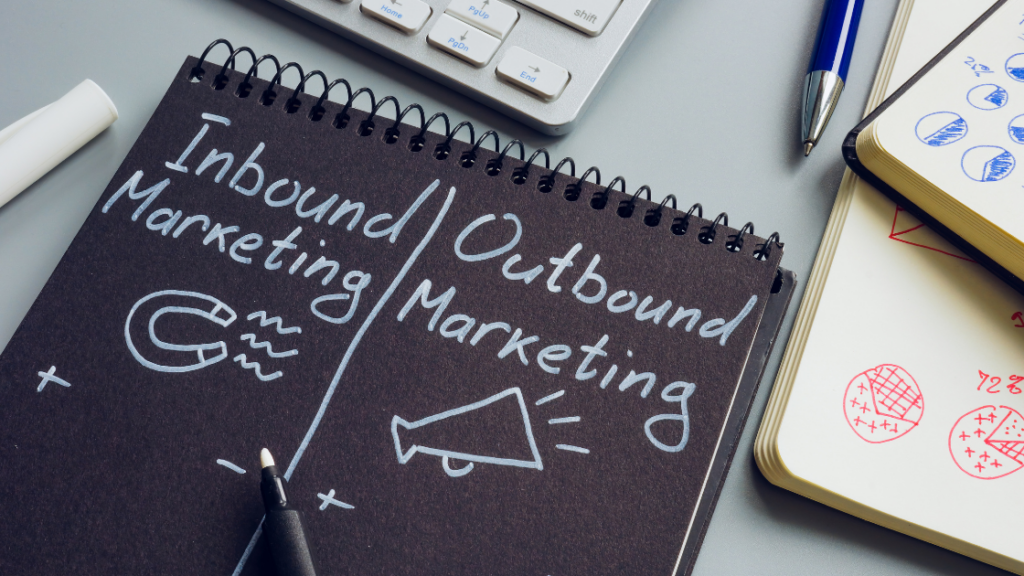
Inbound marketing and outbound marketing are two very different ways to reach people in marketing. The main difference is how they try to connect with their audience. Inbound marketing aims to pull in potential customers by offering useful content they want to find. Outbound marketing, however, tries to grab the attention of many people, regardless of their interests.
You can think of this like a magnet and a megaphone. Inbound marketing works like a magnet. It attracts the right people with specific content. Outbound marketing is like a megaphone, loud and clear, sending messages out to everyone, no matter if they care.
Key Differences Between Inbound and Outbound Strategies
Inbound and outbound strategies are very different in how they try to reach potential customers. An inbound strategy is about creating valuable content that attracts your target audience. In contrast, outbound marketing pushes messages out to a larger group. This key difference affects how well they build brand awareness and generate leads.
Outbound marketing often uses traditional advertising methods, including trade shows, cold calling, print ads, and direct mail. While these methods can work at times, they can struggle to grab attention and reach the right audience in today’s digital world. Outbound marketing can also be seen as annoying or intrusive, which may lead to lower engagement rates.
Inbound strategy, however, focuses on building trust and making your brand a leader in your field. When you provide valuable and relevant content consistently, you draw in people who are truly interested in what you offer. This approach not only boosts brand awareness naturally but also helps create stronger connections with potential customers.
Why Inbound Marketing Wins for Small Businesses
Inbound marketing is changing the game for small businesses. It offers many benefits over traditional outbound methods for getting new leads and growing overall. This approach helps small companies compete well in the digital world and make the most of their marketing.
Instead of using costly outbound campaigns, inbound marketing focuses on creating and sharing valuable inbound marketing content. This type of content attracts potential customers naturally. It is also cost-effective, making it a great fit for the tight budgets small businesses often have. This way, they can see a better return on their investment.
In addition, inbound marketing allows small businesses to reach their perfect customers. By creating content that meets specific needs and interests, they can attract a more qualified audience. This means there’s a better chance of turning leads into paying customers.
Core Components of Inbound Marketing
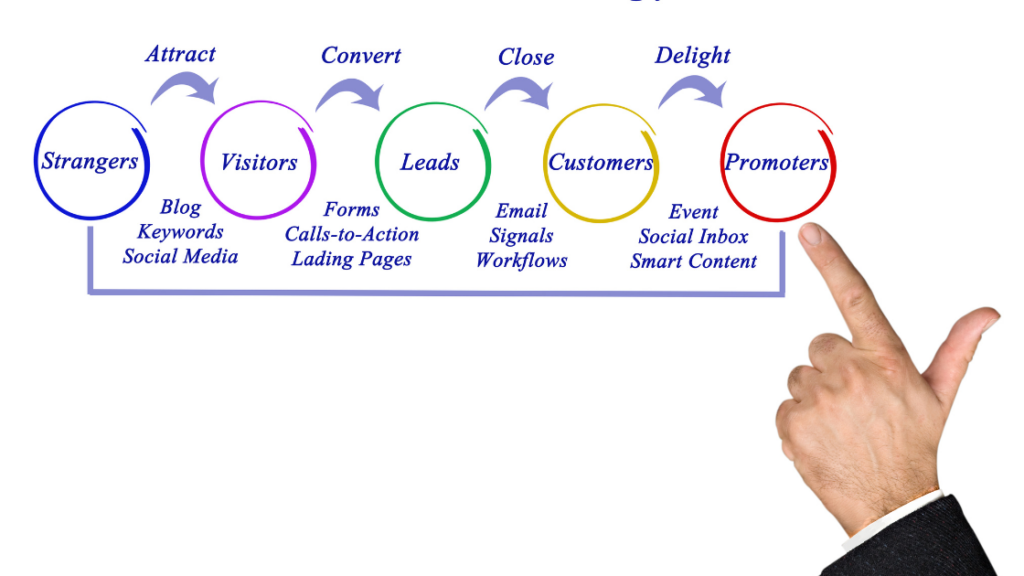
Several key parts work together to build a complete inbound marketing strategy. Content creation is the base. It means making valuable and interesting content that connects with your target audience.
Next, SEO is important to make sure the right people find your content. It involves improving your website and content to rank higher on search engine results pages. This helps bring organic traffic to your site. Social media strategies also increase your reach and engagement. They help you connect with your audience on platforms where they spend their time.
Content Creation and Its Impact
At the core of a good inbound marketing strategy is strong content. Content marketing means making and sharing helpful content that connects with your target audience. It should solve their problems and give them useful information about their interests. When you regularly provide quality content, you make your brand a trusted source. This helps potential customers throughout their buying journey.
Think of your content like a friendly hand reaching out to people looking for answers or ideas. It could be a useful blog post teaching a DIY project, an informative ebook sharing important industry insights, or an exciting video showing your products or services in action, perhaps even offering a free trial to engage potential customers.
Quality content not only engages people right away but also has a lasting effect. By creating content that does well on search engines and is shared on social media, you increase your brand’s visibility and reach more people. Regularly sharing valuable content builds your credibility, earns trust from your audience, and places you as a leader in your industry.
Leveraging SEO for Greater Visibility
Search engine optimization (SEO) is important to help your valuable content get to the right people. Think about creating a nice website with great content but without any signs for people to find it. SEO acts like a guide that leads people to your site.
In simple terms, SEO is about improving your website and content so that they show up higher in search engine results. When potential customers look for keywords related to what you offer, you want your site to be one of the first they see. Here’s how SEO works:
- Keyword Research: Find out which keywords your target audience uses when they search online. Tools like SEMrush and Ahrefs are helpful for checking keyword popularity and competition.
- On-Page Optimization: Adjust your website’s content and structure to match your chosen keywords. This helps search engines access your site better. It includes things like adjusting title tags, meta descriptions, headings, and image alt text.
- Off-Page Optimization: Build your site’s credibility by getting backlinks from other trusted websites. This shows search engines that your site is reliable. Guest blogging and joining online groups are good ways to do off-page optimization.
Social Media Strategies That Engage
Social media marketing is now essential for businesses. It helps them connect with their target audience, build brand awareness, and encourage engagement. With billions of users on platforms like Facebook, Instagram, Twitter, and LinkedIn, you can reach your ideal customers directly.
To stand out in the busy online space, you need engaging social media content. It’s more than just sharing ads. You should provide value, encourage conversations, and build a community. Here are some strategies to improve your social media presence:
- Know Your Audience: Understanding your target audience is very important. Each platform attracts different groups of people. Do some research to find out where your audience spends time and adjust your content for those platforms.
- Content Diversification: Use different types of content. Don’t stick to just one format. Mix images, videos, stories, polls, and live streams to keep your audience interested. Visual content usually does well on social media.
- Consistency is Key: Regular posting helps you stay visible to your followers. You shouldn’t disappear from their feeds. Tools like Hootsuite or Buffer can help manage your posts and keep a steady brand presence.
Implementing Inbound Marketing in Your Business
To make your inbound marketing campaign work, you need a clear plan. This plan should match your business goals and connect with your target audience. First, find out who your ideal customer is. Think about their problems and how your products or services can help solve them, especially in generating qualified leads. This understanding is the base of your inbound marketing strategy.
Next, clearly express what makes your business special. What makes you different from the competition? Why should customers pick you? Creating a strong and clear unique selling proposition (USP) is important. This helps build your brand identity and brings in the right audience.
Identifying Your Target Audience
Before you create your inbound marketing strategy, it is very important to know your target audience. If you do not understand who your ideal customers are, your marketing will miss the mark. Finding your target audience is like making a clear map. This map helps you with content creation, picking channels, and making messages.
You might want to create buyer personas. These are made-up profiles of your ideal customers based on real research. These personas include details about age, interests, problems, and what motivates them online. By knowing what they want and what issues they face, you can make content that truly connects with them.
For instance, if you sell organic baby food, your audience will be different from someone who sells motorcycle parts. Your messages, content, and the social media platforms you use will all depend on the unique needs of your target audience.
Crafting Your Unique Selling Proposition (USP)
Creating your unique selling proposition (USP) means really knowing your target audience. You need to understand what makes your business special. Using NLP terms in your content marketing can help you connect with potential customers. Focus on the benefits of your products or services. Show the value of your brand and set yourself apart from others in the market. A strong USP can drive engagement. It can bring in quality leads and lead to more sales. This makes it an important part of your marketing strategy.
Developing a Content Strategy That Resonates
Once you know your target audience and have made your unique selling point (USP), it’s time to build a content strategy. This strategy will help you connect with your potential customers. Think of your content strategy as a guide. It shows you how to create valuable, relevant, and engaging content for different platforms.
Begin by checking your current content. See what is working well and where you can improve. Ask yourself, what topics have people liked before? What questions do your customers often ask? It’s important to understand what your audience needs. This understanding helps you make content they care about.
Always remember quality content is key. It’s not just about making as much content as possible. Instead, focus on creating high-quality and useful content. This content should grab the attention of your audience. It can be a blog post, a video, an infographic, or a social media post. Ensure your content is well-researched, well-written, and easy to look at.
Tools and Technologies for Inbound Marketing Success
In today’s world, using the right tools and technology can greatly improve your inbound marketing efforts. Customer relationship management (CRM) systems are key for effective inbound marketing. They help you manage customer contacts, keep track of leads, and gain useful insights to guide your marketing plans.
There are also many other marketing technology (MarTech) tools to make your work easier and boost your results. This includes email marketing platforms, social media management tools, SEO analysis software, and content creation tools. When you use the right technology, you can greatly increase your success in inbound marketing.
Must-Have Tools for Every Small Business
Equipping your small business with the right set of tools can revolutionize your inbound marketing endeavors. Consider incorporating these essential tools into your marketing arsenal:
| Tool Category | Tool Name | Description |
| CRM | HubSpot, Salesforce, Zoho CRM | Manage customer interactions, track leads, and analyze sales data. |
| Email Marketing | Mailchimp, Constant Contact, Active Campaign | Create targeted email campaigns, automate email sequences, and monitor campaign performance. |
| Social Media Management | SEMrush, Hootsuite, Buffer, Sprout Social | Schedule posts across multiple platforms, track social media engagement and analyze performance metrics. |
These tools empower you to streamline your workflow, enhance efficiency, and make data-driven decisions to optimize your inbound marketing campaigns continuously. Remember, the right tools can be a game-changer for your small business, empowering you to compete effectively in the digital arena.
Integrating CRM Systems for Better Customer Insights
Customer relationship management (CRM) systems are now important for businesses wanting to improve their inbound marketing efforts. These systems help manage customer interactions, track leads and provide helpful customer insights all in one place. By adding a CRM to your marketing strategy, you can access a lot of data. This data allows you to make your approach more personal, build stronger relationships, and increase sales.
One big advantage of CRM is that it can collect and analyze a lot of customer data. This includes basic contact info, purchase history, website activity, and communication preferences. With this information, you can better understand your customers. Knowing their behavior and needs helps you create marketing messages and content that connect with each group.
CRM systems also help automate routine tasks and make your marketing workflows smoother. This saves time that your team can use for more important tasks, like creating great content, connecting with leads, and fostering relationships. The insights you gather from your CRM also help you measure how well your inbound marketing efforts are doing. You can then use this data to improve your strategies over time.
Measuring the Success of Your Inbound Marketing Efforts
In the fast-changing world of digital marketing, it is very important to measure how well your inbound marketing campaigns are doing. Just going with your gut feeling or guessing is not enough. You should use a data-driven way by tracking key performance indicators (KPIs) and using analytics to get useful insights.
KPIs are specific measurements that show how well your marketing campaigns are doing. By watching KPIs like website traffic, lead generation, landing page conversion rates, and customer acquisition costs, you can clearly see what is working and what needs changes. Regularly checking these metrics helps you improve your strategies, use your resources better, and get the most out of your investment.
Key Performance Indicators (KPIs) to Watch
Monitoring important key performance indicators (KPIs) is very important for measuring how well inbound marketing efforts are doing. Metrics like website visitors, conversion rates, and lead generation are essential to check how campaigns are performing. Tracking customer engagement, click-through rates, and the quality of leads helps provide useful insights. By watching these KPIs closely, businesses can improve their strategies, make their inbound marketing campaigns better, and see greater results.
Adjusting Your Strategy Based on Analytics
Inbound marketing works well when you make decisions based on data. This is why analytics is important. By looking at your marketing data regularly, you can learn valuable things. You will see what your audience likes and change your plans to suit them. Think of your analytics dashboard as a guide. It helps you improve and get a better return on your investment.
Do not hesitate to try out different methods. Test your landing pages and email subject lines. Find out which types of content work best. When you keep an eye on the data, you’ll notice patterns and trends. These will help you understand what your target audience prefers.
Keep in mind that inbound marketing is a process. You should always be optimizing and improving your strategies. As you gather more data, you will get to know your target audience better. This will let you create marketing messages and content that fit their needs more closely.
Conclusion
In conclusion, inbound marketing is very powerful for small businesses. It helps them attract, engage, and please customers naturally. By making valuable content, improving search engine ranking, and using social media well, small businesses can connect with their target audience. Using inbound marketing strategies helps businesses grow and build customer loyalty. Join our Strategy Alignment and Execution membership community today and start with our 6+ hours of training on “Inbound Marketing Strategies for Your Small Business.”
Frequently Asked Questions
What Makes Inbound Marketing Ideal for Small Businesses?
Inbound marketing is great for small businesses. It is a cheaper way to help build brand awareness and grow strong customer relationships. By providing relevant content and reaching out to the right people, small businesses can compete well in today’s changing market.
How Much Should Small Businesses Invest in Inbound Marketing?
The best investment in inbound marketing can change based on your budget, goals, and industry. It’s important to plan carefully. Focus on getting a good return on investment (ROI) rather than just cutting costs. A solid marketing strategy can bring great rewards for your business.

